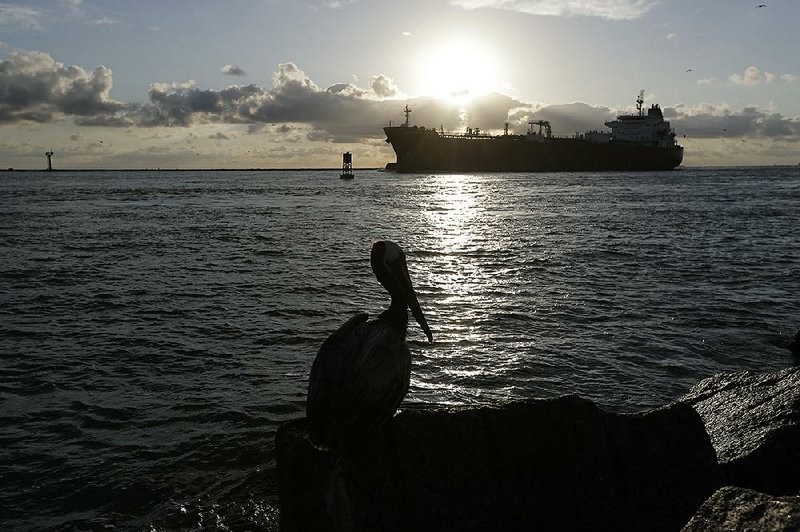Oil prices jumped to their highest levels in more than two weeks after Saudi Arabian and Russian energy ministers stoked expectations that production cuts might be extended for as long as nine months.
Futures closed at their highest in more than two weeks. While output curbs that started Jan. 1 are working, global inventories aren't yet at the level targeted by OPEC and its allies, Saudi Energy Minister Khalid Al-Falih said Monday in Beijing alongside his Russian counterpart, Alexander Novak. The ministers agreed the deal should be extended through the first quarter of 2018 at the same volume of reductions, they said.
"When Saudi Arabia and Russia come out together it sends a very strong signal to the market," said Mike Wittner, head of commodities research at Societe Generale SA in New York. "With these two countries behind the extension of the accord, chances are very high that they will get all of OPEC behind it."
Russia and Saudi Arabia, the largest of the 24 producers that agreed to cut supply for six months, are reaffirming their commitment to the deal amid growing doubts about its effectiveness so far. An increase in Libyan output, together with a surge in U.S. production and signs of recovery in Nigeria, may undercut OPEC's strategy to re-balance the market and boost prices.
West Texas Intermediate for June delivery climbed $1.01, or 2.1 percent, to $48.85 a barrel on the New York Mercantile Exchange. It was the highest close since April 28. Total volume traded was about 38 percent of the 100-day average.
Brent for July settlement rose 98 cents, or 1.9 percent, to $51.82 a barrel on the London-based ICE Futures Europe exchange. It was also the highest close since April 28. The global benchmark crude ended the session at a $2.66 premium to July West Texas Intermediate.
Money managers cut their bullish Nymex West Texas Intermediate bets back to where they were before OPEC agreed to cut output, data from the U.S. Commodity Futures Trading Commission show. Money managers' West Texas Intermediate net-long positions fell by 34,290 positions to 168,814, futures and options in the week ended May 9. Net-long positions on Brent fell by 41,879 lots to 280,678.
"The drop in net-length set the stage for the rally," said Tamar Essner, a New York-based energy analyst at Nasdaq Inc. "Nobody wants to be short going into the OPEC meeting."
Extending the cuts at already agreed-upon volumes is needed to reach the goal of trimming global stockpiles to the five-year average, the energy ministers of the world's biggest oil producers said in a joint news conference. They will present their view at a Vienna summit of OPEC and other exporters May 25.
"Preliminary consultations show that everybody is committed" to the output agreement, said Novak. "I don't see reasons for any country to quit."
OPEC members agreed in November to cut output by 1.2 million barrels a day. Several nonmembers, including Russia, reached an accord in December to contribute a combined 600,000 barrels a day of reductions.
Not everyone is on board yet. Kazakhstan, the biggest producer in the former Soviet Union after Russia, isn't ready to join an extended accord automatically, Energy Minister Kanat Bozumbayev said Monday, according to Interfax. The Central Asian nation will discuss its level of participation at the Vienna gatherings May 24 and 25, the news service reported, citing the minister.
"It's a powerful signal when Saudi Arabia and Russia come out together," Essner said. "They are the most important countries taking part and without their agreement you would not be able to get other countries to come onboard. An extension through the end of the year was widely expected, yet garnering little traction in price, so they must have figured that they had to up the ante for the market to take them seriously."
Amid the cutbacks, U.S. production has risen to the highest level since August 2015. Output is poised to climb further in the months ahead as U.S. explorers stage the longest drilling ramp-up since 2011.
"This is bullish because they are going to extend the cuts longer than was expected," said Bill O'Grady, chief market strategist at Confluence Investment Management in St. Louis, which oversees $3.4 billion. "It's also bullish for oil producers here. They will keep investing, drilling and building pipelines in the U.S."
Information for this article was contributed by Javier Blas and Grant Smith of Bloomberg News.
Business on 05/16/2017
